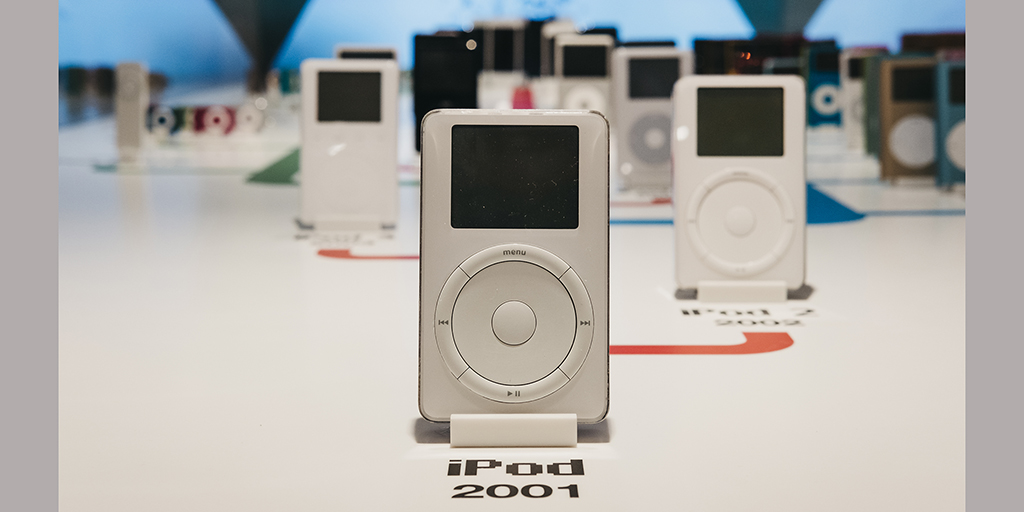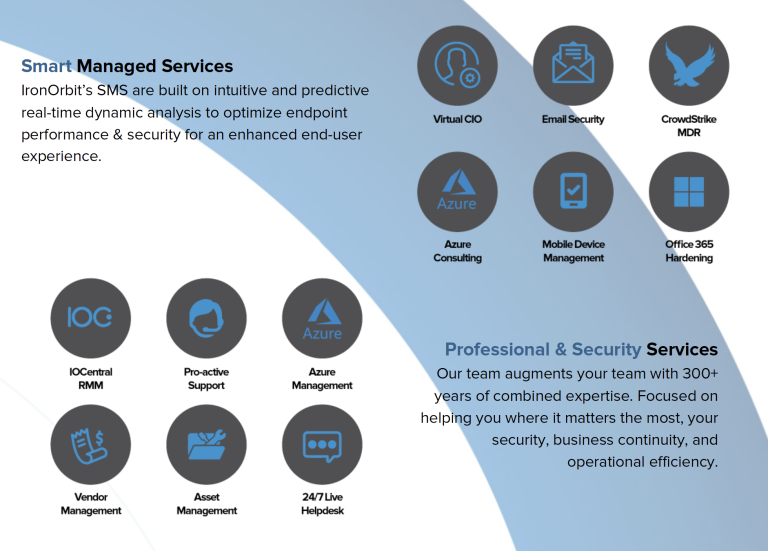How can organizations unlock the full potential of IT to accelerate?
Can you scale while keeping all the plates spinning? Your current employee base may be doing an excellent job of keeping all their plates from crashing to the floor with the current technology in use, but adding many more employees and ramping up operations with that same technology stack results in pieces and shards of plates smashed all over the floor.
Business scalability is all about efficiency and growth. To be genuinely scalable in the modern sense of the word, an organization must:
- accommodate increased demand
- stay on top of trends
- anticipate needs
- be agile enough to handle disruption
The punch line is that all this has to be accomplished quickly. The need for speed requires companies to be highly efficient. That’s where the advantages of cloud environments come into play.
Scaling within the cloud helps you avoid the crash-resume-crash-resume cycle that companies are faced with when trying to scale with an on-site IT infrastructure. Modernizing operations is the “end game” of the digitization phase, which is foundational to the digital transformation journey—establishing an operational backbone is the objective many forward-leaning companies have pursued diligently in the past few years.
Operational excellence is now the minimum requirement for being competitive in the digital age. Let’s explore.
The Old Models of Scaling Won’t Work Anymore
For many, digitization has been the goal for years. The pandemic lockdowns were a coercive force pushing companies to send their employees home to work; thus, digitizing many aspects of their operations. Correctly digitizing operations move the organization further to become a digital company. That is being able to offer digital-value propositions to its customers.
Scalability used to be strictly about increasing profitability and improving efficiency when workload increases. It is also about adding new value propositions (digitization) at speeds that can keep up.
Older ways of doing things will work for a short while, but it won’t take long for businesses to fall too far behind.
Companies have used a siloed way of doing business since day one. Managers would create systems, data, and processes within business silos. Leaders often fail to consider how their systems and processes might eventually need to coordinate with other parts of the business. Once they recognized integration requirements, they’d tweak the systems and processes to achieve their objective, again within their given silo. Managers would address the need for linking systems and processes. The operational environment was complex, hierarchical, and too slow to be effective in today’s digital business world.
The New Dynamic in Scaling Operations – Digital Transformation
According to a December 11, 2020 article by McKinsey & Company, companies worldwide are hard at work evolving their operating models at unprecedented speed.
The hurdles go far beyond shifting back and forth between remote, in-office, and hybrid work models or simply adding or subtracting work-from-home talent as needed.
Digitization enhances operational excellence.
We’re talking about creating a coherent set of enterprise systems, data, and processes supporting core operations. Becoming digital enhances the customer value proposition.
Don’t confuse digitization (doing things we’ve always done only better) with digital transformation (doing things differently than we’ve done before). Being digital enhances the customer value proposition.
Business leaders who think they’re leveraging digital transformation strategy when, in fact, they’re just digitizing some aspect of their operations may achieve operational excellence on an outdated value proposition. For example, you are a taxi company that’s just perfected its operations (digitization). Suddenly Uber and Lyft arrive (digital companies). How’s that going to impact your business? Or consider the impact Amazon has on traditional retailers.
The Next Generation Model of Scaling
This operational backbone, or next-generation operating model, is a new way of running an organization. Next-generation operating models replace messy legacy systems, processes, and data generated by siloed business units. The new design is more open and non-linear. Systems, data, and processes become like the building blocks of a lego kit. that can reallocate resources and develop new digital capabilities in a matter of weeks. Now that’s a challenge.
No wonder, despite Herculean efforts and substantial investment, few companies can move to a modern, digitally-enabled way of working across the entirety of their operations.
A McKinsey survey of more than 1,000 companies indicates about one-third successfully roll out a new operating model.
Einstein is Never Wrong and Why Scaling in the Cloud is the Right Call Now
In their book “Scaling Up: How a Few Companies Make it and Why the Rest Don’t,” Verne Harnish and the team at Gazelles explain scaling all aspects of an organization (including the technology) by quoting Albert Einstein: “Everything should be made as simple as possible, but not simpler.” Harnish goes on to say, “Scaling a business is a complex endeavor and requires robust – yet simple enough – tools and techniques to get the job done.”

Author of the book “Scaling Up: How a Few Companies Make it While the Rest Don’t,” Verne Harnish speaks to an audience of entrepreneurs.
That’s why companies worldwide are attracted to cloud-based applications and workflow as they try to scale. It’s robust enough to handle their “complex endeavor” but with tools simple enough to be implemented and utilized by a fast-growing internal team of employees.
Verne Harnish also helps us envision the stages of scaling infrastructure when he writes, “When you go from two employees to 10, you need better phone systems and more structured space. When your company reaches 50 employees, you still need space and phones. You suddenly also require an accounting system that shows precisely which projects, customers, or products make money. Between 50 and 360 employees, your information-technology systems need to be upgraded and integrated. And above that, you must revamp them again….”
The Two Pizza Rule – Everyone Needs Access, but Not Everyone Needs Their Own Pizza
Amazon has the “two pizza rule.” By it, they mean that no team should be any bigger than can be fed with two pizzas. While that works for physical teams, it doesn’t work for your IT. If you’re going to scale your personnel, you have to scale up your IT – applications, cloud assets, infrastructure, etc. You can’t scale with a “two pizza” rule for your IT infrastructure. Sure, everybody needs access to the “pizza,” but not all your employees are going to need the same key or even access to the same kind of “pizza” as other employees. Scaling technology isn’t simple and requires a partner who understands how the organization’s goals, people, and roles all funnel into the need for tech access as the company scales.
Harness Cloud-based Data Power to Inform Your Scaling Strategy
Your data for your KPIs has to scale – and evolve – with you. Big data, IoT, and AI can help your business leverage more granular data than ever before. Today, under the direction of Reed Hastings, Netflix is a prime example of how scaling a company’s IT can result in game-changing data usage. As Netflix tracks every action of its 213 million-plus subscribers, it can accurately predict what shows, and movies from its production wing will be successful. With this visibility into customers comes the ability to be nimble and agile with their service delivery.

Alfred DuPont Chandler, Jr, recipient of the Pulitzer Prize for his 1977 book, “The Visible Hand: Managerial Revolution in American Business,” wrote extensively about modern corporations’ scale and management structures.
Where Did Outdated Scaling Models Originate? – The Industrial Revolution
Alfred Chandler, Jr is one of the most respected figures in business history. His work redefined industrialization’s business and economic history and gave us a fresh perspective on how the modern digital firm differs from the industrial-age model.
Managerial firms, according to Chandler, evolved to take advantage of productive techniques available after the establishment of rail networks. More profits came from higher productivity and lower costs. America’s “managerial class” arose from this operating model where managers coordinate increasingly complex and interdependent systems.
The New Kind of Firm & a New Way to Scale
Marco Iansiti and Karim R. Lakhani’s HBR article of Winter 2021, “Competing in the Age of AI,” describes how Chandler’s model focuses on the benefits for those companies that successfully achieve greater production scope, and/or variety. On-going efforts to improve added learning as a key characteristic of successful scaling.
“Scale, scope, and learning have come to be considered the essential drivers of a firm’s operating performance. And for a long time, they’ve been enabled by carefully defined business processes that rely on labor and management to deliver products and services to customers, and that are reinforced by traditional IT systems. After hundreds of years of incremental improvements to the industrial model, the digital firm is now radically changing the scale, scope, and learning paradigm.
AI-driven processes can be scaled up much more rapidly than traditional processes can, allow for much greater scope because they can easily be connected with other digitalized businesses, and create incredibly powerful opportunities for learning and improvement, like the ability to produce ever more accurate and sophisticated customer-behavior models and then tailor services accordingly.”
The Foundation of Operational Excellence
Becoming digital is an essential watershed for any modern company.. Leveraging SMACIT, digital expands and accelerates innovation. However, companies cannot afford to neglect the pursuit of operational excellence.
Executing a business strategy that is consistent, reliable, and cost-effective is foundational to sustained business health. Operational excellence is also the mindset that embraces constant and never-ending improvement. Continuous attention to pursuing operational excellence means every employee can see, deliver, and enhance the flow of value to customers.
The constant pressure for all companies is a perfect storm of demands that include the speed of delivery, technology, and communication acceleration. Every employee from the top down is busy making decisions and exploring ideas. They don’t have the time to waste on broken operational processes. Information technology that encompasses systems, processes, and data must make things easier for employees and customers alike.
Perfecting the business model via digital transformation has been key to the expansion and domination of household brands today.

The iPod is a line of portable media players and multi-purpose mobile devices designed and marketed by Apple Inc. The first version, released on October 23, 2001, about eight and a half months after the Macintosh version of iTunes.
Apple began its journey in 1976 and slowly climbed, but its rocket ship of success didn’t go into orbit until 2001 – 25 years later – when the iPod was released. Their launch into this new realm was only made possible with the scalable technologies needed to supply and service the massive demand for the iPod, and its succeeding generations of small devices for the mass market.

Our story begins in 1971 along the cobblestone streets of Seattle’s historic Pike Place Market. Here, Starbucks opened its first store, offering fresh-roasted coffee beans, tea, and spices from around the world for our customers to take home. They started by selling coffee beans roasted by Peet’s, a gourmet coffee company in Berkeley, California, then began roasting their own. A year later, Howard Schultz came on board as CEO, urging Starbucks opened its first espresso bar in 1984.
Starbucks also had its learning curve. The company took 20 years from 1971 to perfect its business model and underlying corporate technologies to scale from 100 locations in 1991 to 18,000 locations in 62 countries today.
But that was then, back before the availability of cloud resources. Now, the cloud, and cloud-based technologies, can propel companies, big and small, into a new stratosphere of capability within a short amount of time.
Investing in Scaling Tech Capability Pays Off
While you expect a company like JP Morgan Chase to be investing heavily in technology, what may not quickly come to mind is that they have been investing in tech all along the way as they scaled the business. They are investing in IT-based workflow advancements because that investment pays off. JP Morgan Chase has more than 50,000 technology professionals and invests eleven billion per year in its digital development.
But JP Morgan chase isn’t the only big-name company where we see investment in tech as a part of a scaling strategy. In 2018, Walmart chose to bring on an additional 1,700 IT staffers. To quote USA Today, they “beefed up” their “omnichannel presence to better compete with Amazon, Costco, and other peers.”
The result?
Walmart’s stock rose by 17% over the next two years.
While neither JP Morgan Chase nor Walmart took on massive “scaling” projects over the past two years (not many did), we can guess that the industry leaders see technology as the business expansion enabler that it is.
In Conclusion
Scalability is a necessary ingredient to future-proofing your network. Businesses have survived without a scalable network, but that won’t be true as we move into this decade.
Business leaders must liberate their companies from legacy systems, safeguard their data, and continuously conserve costs by implementing technology that fits where they’re at and where they’re going strategically. Scaling a business with agility and resiliency can only be achieved by embracing new technology, and that begins by designing an IT environment built for the digital age.
Success in 2022 is going to be about flexibility and scalability. If you’re going to compete and win, the cloud environment will be critical to your success.
Choose options that allow enough elasticity for you to reimagine what optimal scalability means to you.
Lay the groundwork so that there’s a solid foundation. That way, your digital journey will move forward with incredible, even inspiring, momentum.














